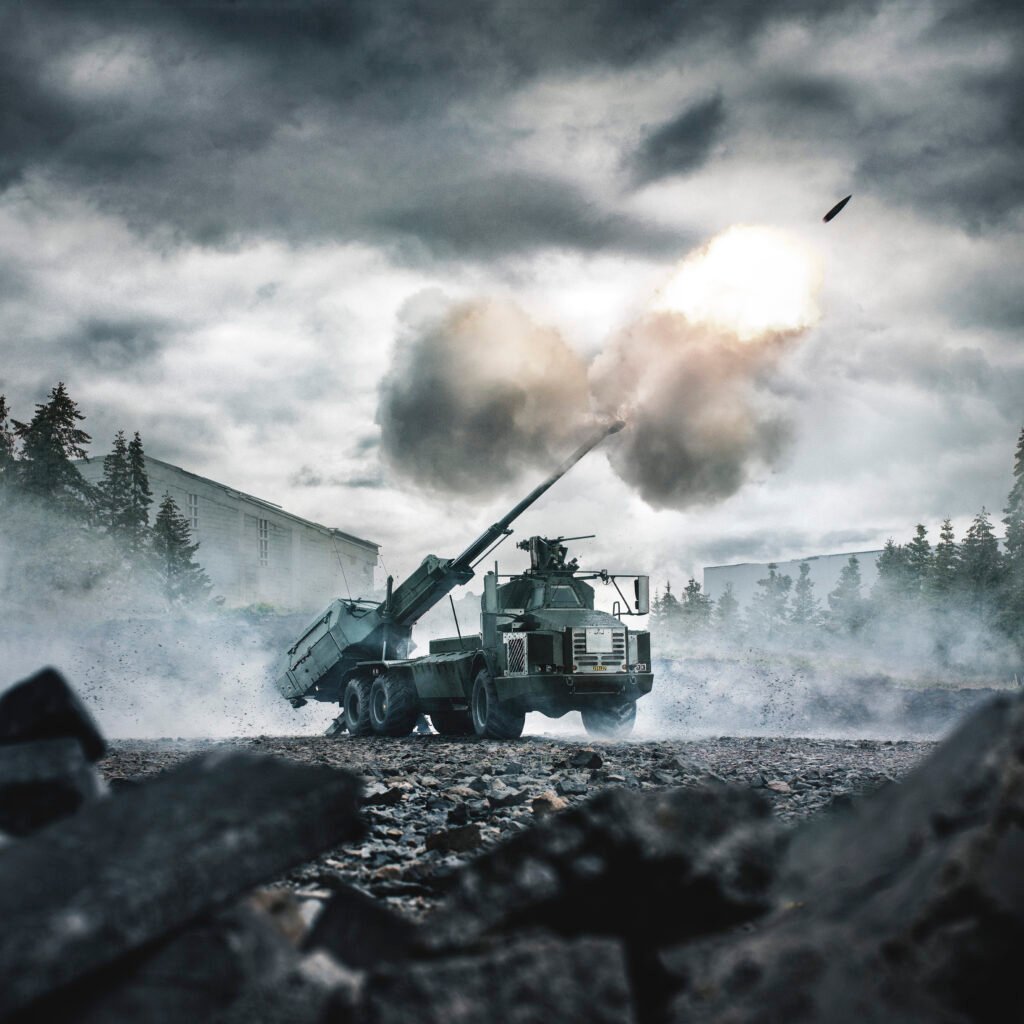
BAE illustration of their Archer self-propelled howitzer
WASHINGTON: The Army is seeking a self-propelled replacement for its venerable towed artillery pieces. The old ones can’t keep up with mechanized Stryker units and lack armor protection. BAE Systems says its Archer armored howitzer is the quickest cannon on the draw — a life-or-death factor in fast-moving future combats.
The US is experimenting intensely in how to speed the process from detecting a potential target to sending accurate target coordinates to a specific gun. Once Archer receives such target coordinates, it can come to a stop and open fire within 20 seconds, said Henrik Knape, a BAE exec based in Sweden, where the gun is already in service. Within two minutes from that first shot, Knape went on, the truck-mounted 155mm howitzer can fire another five to seven rounds, get back underway, and put 500 meters (a third of a mile) between itself and the location it fired from.
That’s a long enough distance in a short enough time that retaliatory fire from the enemy’s artillery is probably going to miss. Even for an advanced adversary (pronounce that “Russia”), which uses specialized counter-battery radars to track the trajectory of incoming rounds and calculate the precise position of the unit firing them, it will take multiple minutes to bring its own guns or drones to bear.
In US operations, the time from detecting a target to firing on it is typically “tens of minutes.” Experimental artificial-intelligence systems can cut that to tens of seconds, but those are years from being battle ready.
Archer has other advantages as well, Knape and his US-based colleague Chris King told a small group of reporters:
- It’s been in Swedish service since 2016, with the Defense Ministry asking Parliament to fund another 24 guns, so it’s already extensively field-tested.
- It’s armored against shrapnel and small arms, in case the enemy does get close.
- Its long barrel – 52 calibers, a third longer than the standard US howitzer – gives it extended range, comparable to the tracked ERCA howitzer entering service with US armored units in 2023. That gun is already qualified in US testing to fire precision-guided projectiles like Raytheon’s Excalibur and BAE’s own BONUS.
- And it’s mounted on a six-wheel-drive, articulated Volvo chassis with enough cross-country mobility to keep up with the Army’s 8×8 Strykers, which currently have only towed guns to accompany them.
There are smaller wheeled artillery vehicles on the market than Archer, which doesn’t fit on the standard C-130 turboprop transport, Knape and King acknowledged. (We check out a Humvee-mounted 105 mm cannon here).But none of them, they argue, has Archer’s combination of firepower, protection, and quickness.
The secret to that speed is automation, BAE says. While the US Army’s current systems – both towed howitzers and the armored M109 Paladin – still rely largely on human muscle to manhandle heavy shells into the gun, Archer has a built-in autoloader. While well-trained human crews can actually fire faster than autoloaders for brief periods, the mechanical systems don’t get tired or injured, and they allow for a much smaller gun crew. Archer can theoretically operate with a single soldier aboard, although it’s designed for a crew of three – all of whom can stay inside the armored cabin while the weapon fires and reloads.
The Army plans to hold its shoot-off in the first three months of 2021 (the second quarter of the federal fiscal year), and we’ll update you on other competitors as they come forward.
Army eyes TBI monitoring, wearable tech for soldiers in high-risk billets
“We are also looking at what additional personal protective equipment we can provide to our folks, especially instructors and others who are routinely exposed to blast pressure,” said Army Secretary Christine Wormuth.


























